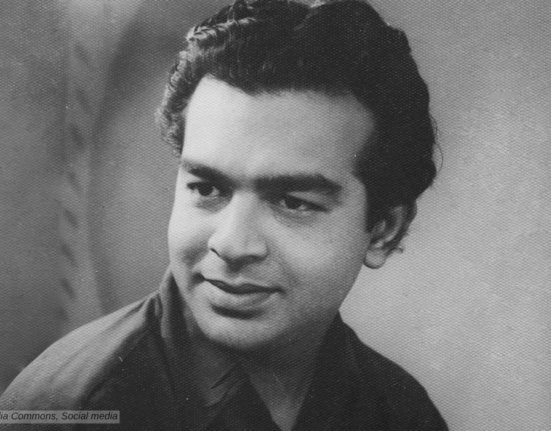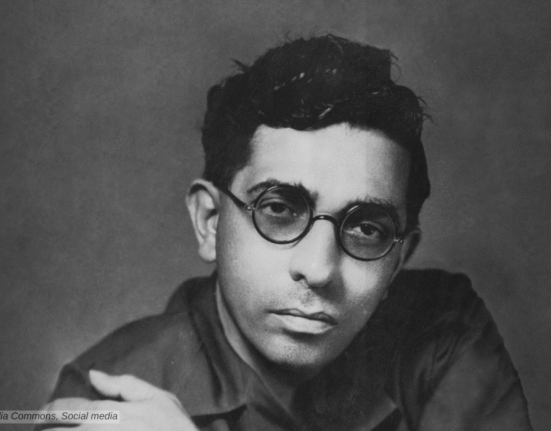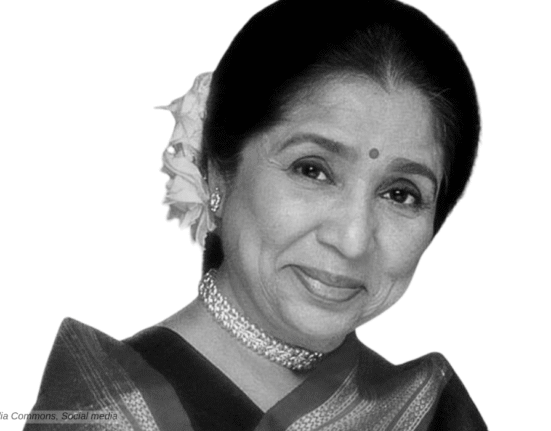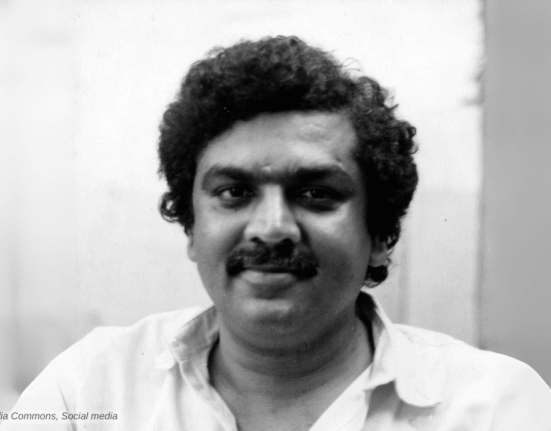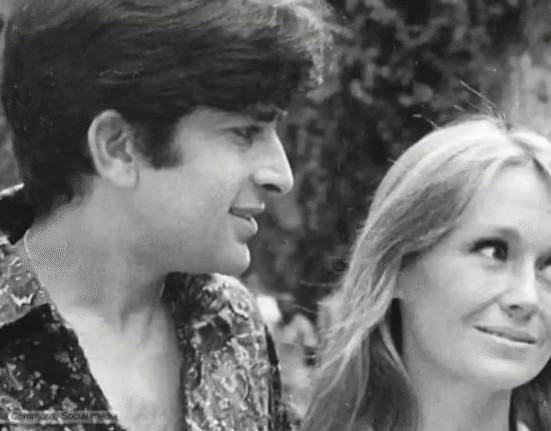Known for her exaggerated expressions and impeccable comic timing, Manorama started her career as a leading lady and went on to become one of the most legendary character actors of Indian cinema. With a career spanning over six decades, Manorama appeared in more than 160 films, which include her celebrated portrayal of the comical tyrant aunt in “Seeta Aur Geeta (1972)” as well as memorable roles in films like “Johar Mehmood in Hong Kong,” “Mere Huzoor,” “Ek Phool Do Maali,” “Do Kaliyaan,” and many more.
Early Life and Career
She was born Erin Isaac Daniels on 16 August 1926 in Lahore, Punjab, British India. She had an Irish mother and an Indian Christian father who was a professor of engineering. From a young age, Manorama showed a keen interest in performing arts. She began learning classical singing and dancing as a child and became a skilled performer. She started her acting career as a child artist in the early 30s under the name Baby Iris. Director Roop K. Shorey, who saw her talent in a school concert, was the one who changed her screen name from Iris to “Manorama.”
Manorama was a trained classical singer; she also performed in the Red Cross’s charity shows in Lahore in the 1940s. Her first adult role came in Roop K. Shorey’s Khazanchi (1941), where she played Hero S. D. Narang’s sister. Soon she became a popular and highly paid actress with hit films like Sehti Murad (1941), Mera Mahi (1941), Khandaan (1942) with Noor Jehan, Zamindar (1943), Koel (1944), Hamrahi (1945) directed by Bimal Roy, Rehana (1946), Shalimar (1947), and Lacchi (1949).
Character Roles

In her early career, she starred in several Punjabi films and quickly gained popularity for her acting skills. After the partition of India in 1947, she moved to Mumbai with her husband, Rajan Haksar, also an actor and producer. After her marriage, the offer of roles as a lead declined, so she had to accept character roles. In 1948, she was praised for playing Dilip Kumar‘s sister in “Ghar ki Izzat.”
Manorama experimented with villainous and comedy roles and got great acclaim for her caricatures, voice modulations, and expressions. She was known for her versatility, comic timing, and expressive face. Her exaggerated expressions become so iconic that people say, “She is the original emoji inspiration.”
Queen Of Expressions
She worked with many prominent actors and directors of Hindi cinema, such as Dilip Kumar, Kishore Kumar, Madhubala, Guru Dutt, Raj Kapoor, Dev Anand, Meena Kumari, Rajesh Khanna, Hema Malini, and Amitabh Bachchan.
Some of her memorable films include Parineeta (1953), Jhanak Jhanak Payal Baaje (1955), Half Ticket (1962), Mujhe Jeene Do (1963), Janwar (1965), Dus Lakh (1966), Ek Phool Do Maali (1969), Do Kaliyaan (1968), Bombay to Goa (1971), Mehboob Ki Mehndi (1971), Caravan (1971), Bombay To Goa (1972), Seeta Aur Geeta (1972) and Lawaris (1981).


In the early 80s after doing Akbar Khan’s Haadsa (1983) she took a break from films and did very few roles in the 80s and 90s. Later she came back to TV and did a few serials like Kkutumb, Kundali and Kahani Ghar Ghar ki.
Last Film and Legacy
Her final film was Deepa Mehta’s “Water (2005),” a film where she captivated Hollywood critics with her compelling performance. The production of “Water” faced major controversies and shoots were interrupted in Varanasi, when it resumed after a five-year hiatus, the entire cast changed, with one exception — Manorama, for the role of a ruthless “Madhumati” who forced widows into prostitution, she was the only choice.
Manorama was a lively and cheerful person who loved to entertain people with her jokes and stories. She was also a generous and compassionate person who helped many newcomers and needy people in the film industry. She had a daughter named Rita Haksar who was also an actress(did Suraj aur Chanda(1973) opposite Sanjeev Kumar).
Manorama passed away on 15 February 2008 in Mumbai due to multiple organ failure. She was 81 years old. She left behind a legacy of laughter and joy for millions of her fans who adored her.
Manorama on IMDB



